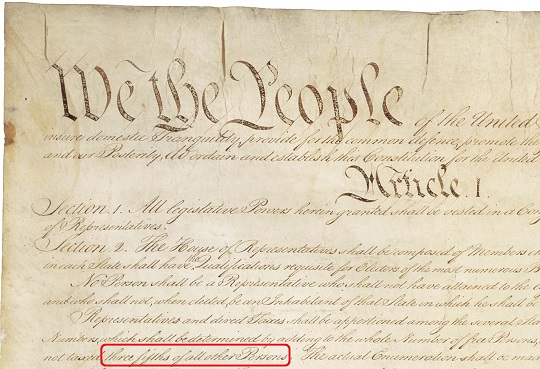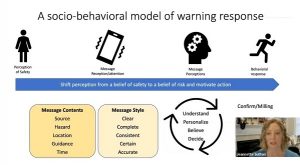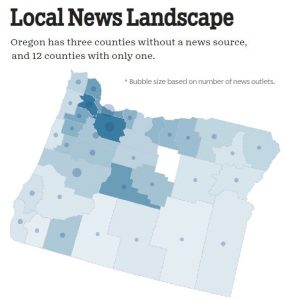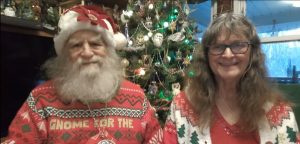Happy Constitution Day 2022
5 min read
by John Quetzalcoatl Murray
In the late 1780s, the newly-independent North American colonies had not yet solved their most difficult problem. They had not yet found a way for 13 colony-states to work together as one nation. Awarding political power based only on population would hand the national power to big states. Treating states as equals would hand the national power to small states.
Meeting in Philadelphia through the summer of 1787, the greatest political minds of the day presented a pragmatic solution on Sept. 17. As the highest law of the land, their new constitution would allow slaveowners and non-slaveowners to participate equally in the new government.
In establishing a legal basis for color-caste slavery, the constitution established a three- part structure and elements still visible today:
- One legislative chamber based on state equality, one based on state population.
- A regular census every 10 years.
- Incentives for slaveowners: The more slaves, the more political power, based on a 3/5 formula.
- An electoral “college” to select the executive.
The convention failed to provide for individual rights and so the constitution immediately needed 10 amendments. The 1800 presidential election failed and prompted another amendment. But its biggest failure, its silence on the future of slavery and new state admissions, would lead to civil war just a few generations after ratification. This despite the example of July 1787 Northwest Ordinance, which provided clear directions.
More failures: Within living memory, Congress has ceded to the executive its most important constitutional power—the power to declare war. The decision to withhold that power from the executive was a big innovation in its time, and much discussed during the constitutional convention. Yet Congress has not declared war since WWII, despite the nation’s continuing participation in vast military activities, including the Iraq and Afghanistan campaigns. Instead, authorizations for use of military force (AUMFs) have allowed for executive discretion and mission creep from Vietnam to Ukraine. There is still an open authorization relating to 9/11.
Fast forward to 2022. George Floyd, Roe v Wade, MMIWC, and the ongoing use of automatic weapons to kill human beings at elementary schools, movie theaters, and grocery stores—all share a root cause in our moribund and failing 1787 constitution.
Continued expansion of executive power at the expense of the other branches will, as we saw Jan. 6, eventually lead to an executive branch that decides it no longer needs the other two branches of government and can dissolve the constitutional framework by executive order. Each branch of government was designed to check the others, as in rock-paper-scissors. Once the rules change, it’s game over.
The 1787 constitution addressed the existential problem our society faced in the late 1700s, which was conjoining colonies for common defense against the powerful monarchies of Europe. Today our existential problem is climate change.
Although scientists warned of global warming 50 years ago, our political system failed to act on behalf of our own descendants. The courts will not even hear the Juliana youth. This Constitution Day, we start an explicit and authentic act of the whole people to move towards a Juliana-friendly constitution.
Our new constitution must help us—not prevent us—from rapidly adapting to a dynamic global climate. The problem we face now is to give our great-grandchildren the chance to live above the surface of the planet, in a world that still has birds and fish and trees. To survive our wild binge on fossil fuels, we will need to innovate and learn from others—such as the Haudenosaunee who advised the founders—as we adapt our governance tools to provide for community rights, the rights of nature, and the rights of natural processes.
So this Constitution Day, as we visit our dried-out United States constitution in its hospice, wheezing and laboring for each breath—just as we are during the western megafires—we can resolve to start making small course corrections to better align our constitution with the laws of nature and of nature’s God.
This Constitution Day, as we recognize needs that go beyond political equality for slaveowners, we endorse a campaign for the first such small course correction, to align our administrative boundaries with watersheds. Linking our identities with the watershed in which we live will help us in the years ahead, as we focus on water, air, habitat and extend the census to include fish, wildlife, and other species.
As one might expect, Lane County watersheds are ahead of the curve: The Lane County-Douglas County border already follows the watershed. Some members of the Pacific Green Party are organizing by watersheds. Community Rights Lane County is working to secure the rights of waters and watersheds to sustainable recharge, flows sufficient to protect native fish habitat, and clean water unpolluted by any activities of corporations, governments, and other business entities. The Oregon Community Rights Network is working on a community rights amendment to the Oregon constitution.
With slavery now abolished, we no longer need a government structure designed to provide political equality for slaveowners. We call on our greatest political thinkers to once again tap into that deep American current of pragmatism, and discover the constitution that can successfully address the existential problem facing us today.
For more about ORCRN: The Oregon Community Rights Network formed in order to address structural deficiencies in the ordering of government in order to make sure the people, where they live, have the greatest ability to address deep community concerns. Through local advocacy, state level advocacy, awareness campaigns, and educational opportunities the ORCRN has been hard at work at both building the potential for fixing those structural deficiencies (state and federal constitutions) along with acting in the moment to place communities ahead of profit. Current focus areas include co-organizing the launch of a new statewide initiative to bring people, communities, and issues together under the banner of Oregon Stands, continued work to generated awareness and action to confront state ceiling preemption (aka limiting local democratic authority), and ongoing awareness and educational opportunities through its Wednesday Webinar Series, workshops, and partnership with CELDF in hosting Democracy School. Learn about and join in on the efforts of the ORCRN at orcrn.org






